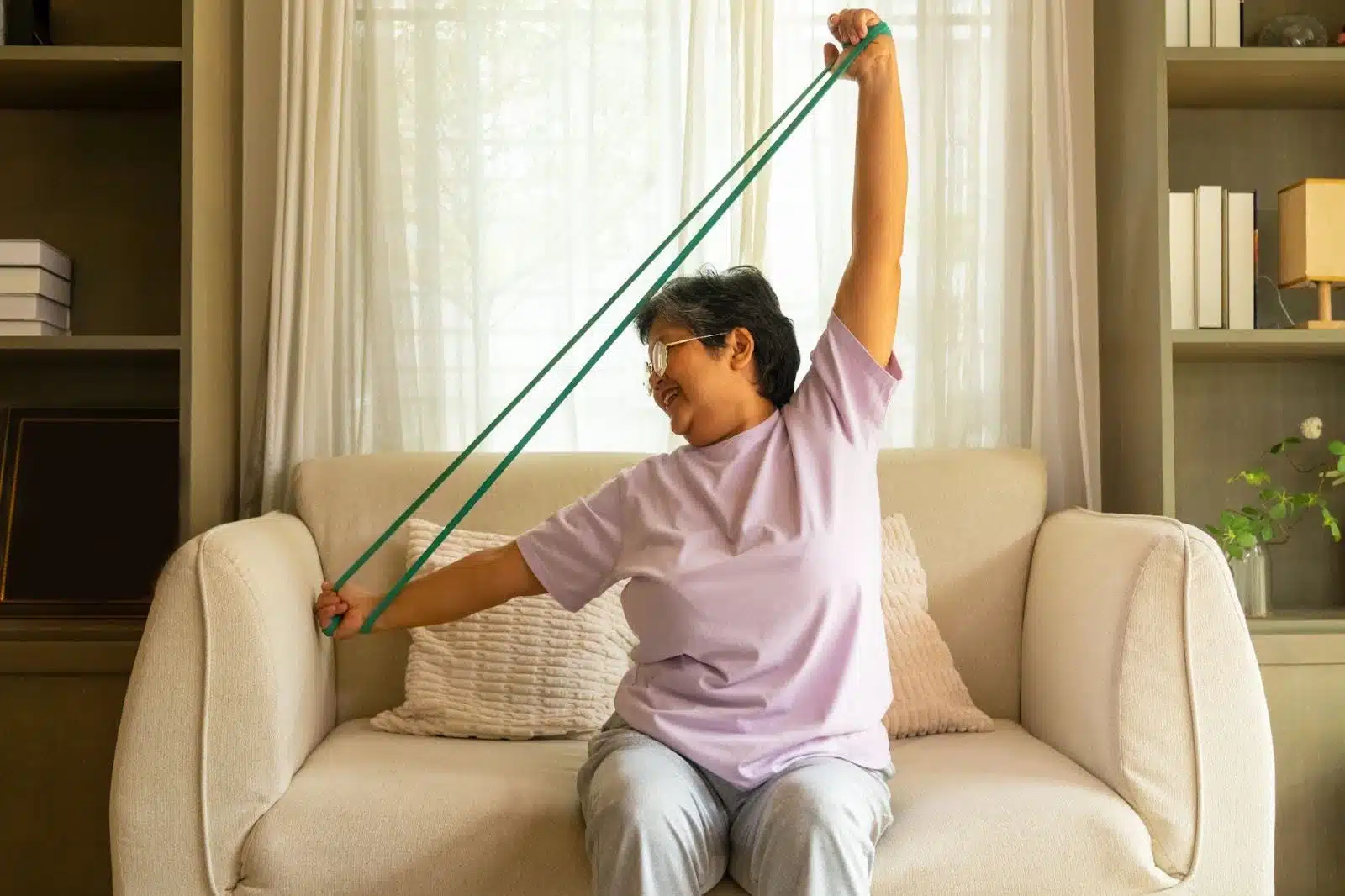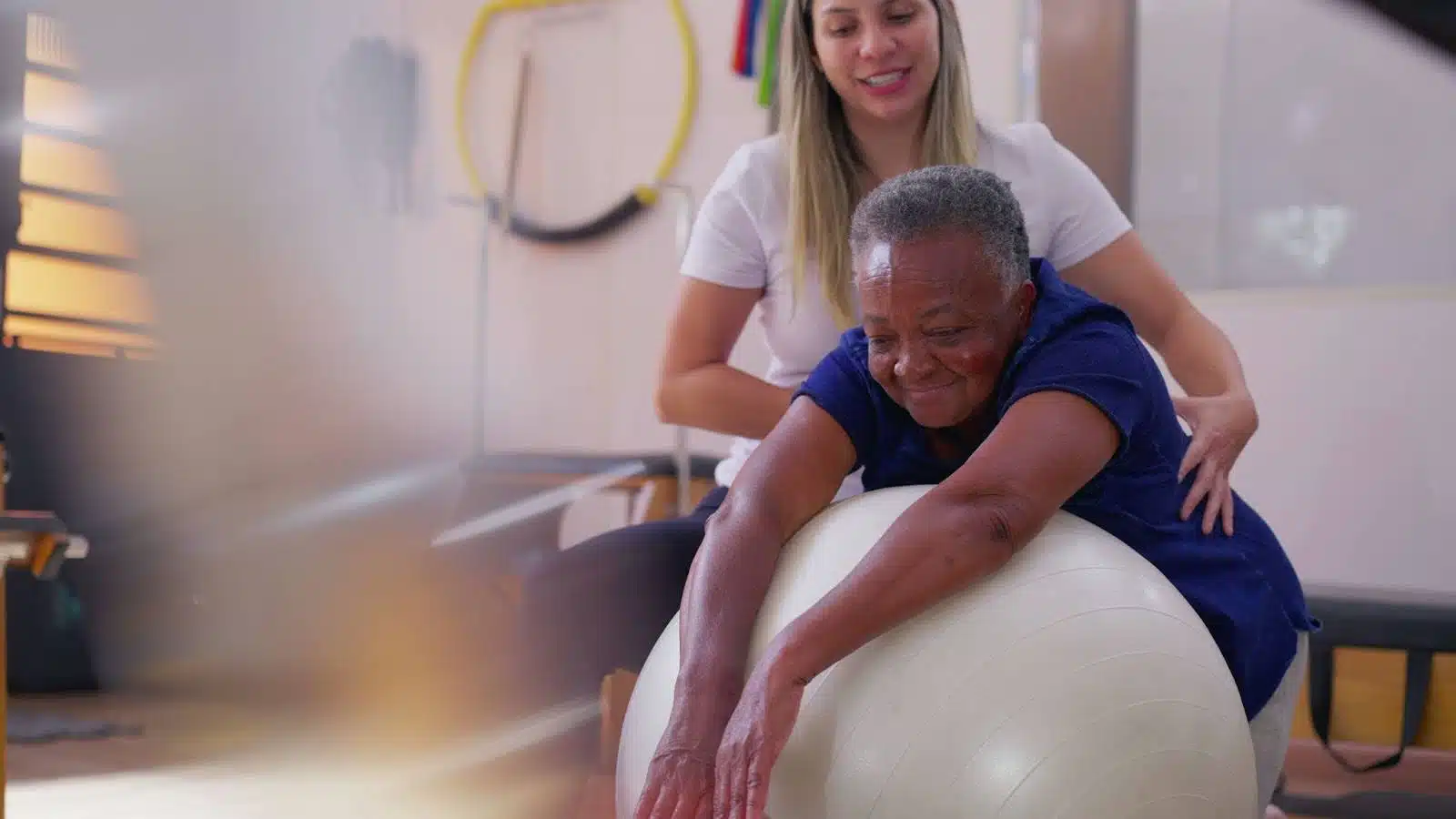In Canada, a significant number of seniors are not engaging in recommended strength training activities. According to a study published in Health Promotion and Chronic Disease Prevention in Canada, only 41.7% of adults aged 65 years and older adhere to the muscle and bone-strengthening guidelines, and a mere 16% meet the balance activity recommendations.
As Joanne McLeod of the iconic Canadian series BodyBreak explains, “By keeping your muscles as strong as possible, you’re giving yourself that suit of armour so that chances are you’re not going to get hurt. If you do get hurt, it won’t be as severe, and your recovery will be a lot quicker.” With the right approach, strength training can be a powerful tool for staying active, independent, and resilient as we age.
Disclaimer: This information is not intended as a substitute for professional consultation, diagnosis, or treatment; it is provided “as is” without any representations or warranties, express or implied. Always follow the advice of a healthcare provider, and we encourage you to speak with a medical professional if you experience a fall.
What is Strength Training?
Strength training involves exercises designed to improve muscle strength and endurance by working against resistance, such as weights or resistance bands. Incorporating these activities into daily routines can enhance mobility, balance, and overall quality of life for seniors.
Why Strength Training is Crucial for Seniors
Strength training plays a pivotal role in maintaining and enhancing seniors’ health, particularly in preserving balance and mobility. As we age, muscle mass naturally diminishes—a process known as sarcopenia—which can lead to decreased strength and stability. Engaging in regular strength training exercises helps counteract this decline by building muscle mass, thereby improving balance and reducing the risk of falls. Enhanced muscle strength contributes to better coordination and stability, making daily activities safer and more manageable.
Benefits of Strength Training
Beyond fall prevention, strength training offers numerous additional health benefits for seniors. Regular resistance exercises can improve bone density, reducing the risk of osteoporosis and fractures. Strength training also enhances joint health by stabilizing the muscles around joints, alleviating pain and improving overall function. Moreover, engaging in strength training has been linked to improved cognitive function, potentially slowing the progression of cognitive decline. It also supports heart health by aiding in the management of blood pressure and cholesterol levels, contributing to overall well-being.
How to Start Strength Training
Despite its benefits, many seniors struggle to stick with a strength training routine due to fear of injury, lack of motivation, or uncertainty about proper techniques. To improve consistency and confidence, seniors can:
- Seek guidance from fitness professionals to ensure proper form and reduce injury risk.
- Start with simple, low-intensity exercises< and gradually increase difficulty.
- Join group activities for social support and motivation.
- Set realistic goals to track progress and stay engaged.
Incorporate strength exercises into daily routines for consistency.
By overcoming these challenges, seniors can maintain independence, reduce fall risks, and enhance their overall well-being.
Safe Strength Training Principles for Seniors
The following exercises are divided into seated and standing options, making them accessible for different mobility levels. Each one focuses on improving coordination, strength, and stability to support an active lifestyle.
Seated Exercises
Balance & Coordination Strengthening
- Seated Marching: While seated, lift each knee alternately as if marching. This exercise enhances hip flexor strength and improves coordination, aiding in daily movements.
Upper Body Strengthening
- Seated Row with Resistance Band: Sit straight and loop a resistance band around a sturdy anchor in front of you. Hold the ends, pull back, squeeze your shoulder blades together, then release. This movement strengthens the upper back and shoulders, promoting better posture.
Lower Body Strengthening
- Seated Leg Lifts: From a seated position, extend one leg straight and hold for a few seconds, then lower it back down. Repeat with the other leg. This exercise targets the quadriceps, aiding in activities like standing up from a chair.
Standing Exercises
Balance & Coordination Strengthening
- Heel-to-Toe Walk: Stand upright and place one foot directly in front of the other, heel touching toe. Walk forward slowly, focusing on balance. This exercise improves stability and reduces the risk of falls.
- Wall Push-Ups: Stand facing a wall, arms extended at shoulder height, hands on the wall. Bend your elbows to bring your chest closer to the wall, then push back to the starting position. This movement strengthens the chest, shoulders, and arms.
Lower Body Strengthening
- Chair-Assisted Squats: Stand in front of a sturdy chair with feet shoulder-width apart. Lower your body as if sitting down, lightly touching the chair, then rise back up. This exercise strengthens the glutes, quadriceps, and hamstrings, which are essential for daily activities.
Incorporating these exercises into a regular fitness routine can significantly enhance seniors’ strength, balance, and coordination, contributing to improved independence and quality of life.
Sample Weekly Strength Training Plans
A well-rounded strength training plan helps seniors build muscle, improve balance, and maintain flexibility while minimizing the risk of injury. By alternating muscle groups and incorporating rest days, seniors can prevent fatigue and allow their bodies to recover.
For those new to strength training or with limited mobility, starting with seated exercises is a great way to build strength safely. Over time, as confidence and stability improve, transitioning to standing exercises can provide an added challenge and further enhance balance and coordination. Seniors can also mix and match seated and standing exercises based on their comfort level and progression goals.
On rest days, light activities such as walking, stretching, or household tasks can help maintain mobility. These schedules offer flexibility—seniors can begin with seated exercises and gradually incorporate standing movements as they feel stronger and more stable.
Addressing Common Concerns and Misconceptions
Despite the many benefits of strength training, some common misconceptions may prevent seniors from getting started. Let’s break down these myths and highlight the facts.
Myth: “Strength training is too dangerous for seniors.”
Many worry that lifting weights or doing resistance exercises could lead to injury. However, strength training can be safe and highly beneficial when done with proper guidance. Simple modifications—such as using resistance bands, starting with light weights, and performing seated exercises—make it accessible for all fitness levels while reducing the risk of injury.
Myth: “It’s too late to build muscle.”
It’s a common belief that once muscle loss begins, it can’t be reversed. The truth is muscle can be strengthened at any age. Research has shown that even seniors in their 80s and 90s can build muscle mass and improve mobility through regular resistance training. Starting small and progressing gradually can lead to noticeable improvements in strength, balance, and overall function.
Myth: “I need a gym to do this.”
Strength training doesn’t require a gym membership. Many effective exercises can be done at home with minimal equipment, such as a sturdy chair, resistance bands, or even body weight. Simple movements like wall push-ups, seated leg lifts, and heel-to-toe walks provide excellent strength and balance benefits without the need for machines or heavy weights.
Incorporating Other Activities for a Well-Rounded Routine
Incorporating a variety of physical activities into a weekly routine helps seniors maintain strength, mobility, and overall well-being. Strength training is most effective when combined with balance exercises, which help improve stability and coordination, reducing the risk of falls. Simple movements like heel-to-toe walks or single-leg stands can enhance balance over time.
Low-impact cardiovascular activities also play a key role in maintaining heart health and endurance. Walking is one of the easiest ways to stay active, while swimming provides a joint-friendly option for building stamina. Cycling, whether stationary or outdoors, is another excellent way to keep the body moving without excessive strain.
Flexibility and mobility exercises help reduce stiffness and support joint function. Yoga offers gentle stretching combined with breathing techniques for relaxation, while simple stretching routines can be done at home to maintain mobility.
Daily activities like gardening, housework, or even recreational games provide additional ways to stay active while keeping life enjoyable and engaging. According to the Canadian Physical Activity Guidelines, older adults should aim for at least 150 minutes of moderate- to vigorous-intensity aerobic activity per week, along with strength exercises at least twice weekly (Canada.ca).
Nutrition Tips to Support Muscle Building
Maintaining proper nutrition is essential for seniors aiming to build muscle and enhance overall health. Key dietary considerations include adequate protein intake, essential vitamins and minerals, and proper hydration.
Protein Intake
To preserve muscle mass, seniors are advised to consume 1.0 to 1.2 grams of protein per kilogram of body weight daily. For example, a senior weighing 70 kg (154 lbs) should aim for 70 to 84 grams of protein each day. Incorporating protein-rich foods such as lean meats, dairy products, legumes, and nuts into meals and snacks can help meet these requirements. While Health Canada recommends a general protein intake of 0.8 grams per kilogram of body weight for adults, some experts suggest that older adults may benefit from higher protein consumption to maintain muscle mass.
Essential Vitamins and Minerals
Bone and muscle health rely on nutrients like calcium, vitamin D, and magnesium. Health Canada recommends that women over 50 and men over 70 consume 1,200 mg of calcium daily, while men aged 50 to 70 should aim for 1,000 mg daily. Additionally, adults over 50 are advised to take a daily supplement of 400 IU (10 mcg) of vitamin D to support calcium absorption and bone health. Magnesium, found in whole grains, green leafy vegetables, and nuts, also plays a role in muscle function and should be included in a balanced diet.
Hydration
Staying well-hydrated is vital for muscle recovery and performance. Adequate fluid intake supports nutrient transport and joint lubrication, aiding in effective workouts and recovery periods. Health Canada emphasizes the importance of drinking water regularly throughout the day and suggests making water your beverage of choice. Other hydrating options include herbal teas and milk.
Disclaimer: Always check with your doctor or pharmacist to discuss potential interactions between your medications and any beverages or foods you consume.
Healthy Meal and Snack Ideas
Incorporating balanced meals and snacks can help meet nutritional needs. Consider options like:
- Breakfast: Greek yogurt with mixed berries and a sprinkle of chia seeds.
- Lunch: Quinoa salad with mixed vegetables and grilled chicken.
- Dinner: Baked salmon with a side of steamed broccoli and brown rice.
- Snacks: A handful of almonds or a smoothie made with spinach, banana, and protein powder.
By focusing on these nutritional strategies, seniors can support muscle building, maintain bone health, and enhance overall well-being.
Stay Strong, Stay Independent
Strength training is one of the most effective ways for seniors to maintain independence, reduce fall risks, and improve overall well-being. By starting with small, manageable exercises and gradually building strength, older adults can enhance balance, mobility, and confidence in daily activities. The long-term benefits extend beyond muscle health—staying active supports heart health, cognitive function, and overall quality of life. It’s never too late to get stronger.
For added peace of mind, pairing an active lifestyle with a reliable support system can help seniors feel safer at home and on the go. At Lifeline Canada, we offer valuable resources to support senior safety and well-being, including:
- Tools & Tips for Senior Safety: Practical advice on staying safe and independent.
- Fall Prevention Guide: Learn how to reduce fall risks at home and while staying active.
- Medical Alert Assessment: Find out which alert system best fits your needs.
- Caregivers’ Hub: Support and guidance for loved ones helping seniors maintain independence.
- Lifeline Canada Blog: Articles on senior health, wellness, and safety.
By combining strength training with proactive safety measures, seniors can continue living confidently and independently.
What You Should Do Now:
Here are 5 ways we can help you or your loved one live safer and more independently at home as long as possible:
- Get our latest tips, tools and resources straight to your inbox. Sign up for our monthly newsletter.
- Not sure if the time is right for a medical alert service? Take this quick assessment to find out.
- If you would like to learn how to live a healthier and safer lifestyle, go to our blog or visit our resources section, where you can read and download guides.
- Wondering which medical alert system company is the best for your needs? We’ve put together a guide comparing the best medical alert systems for you.



